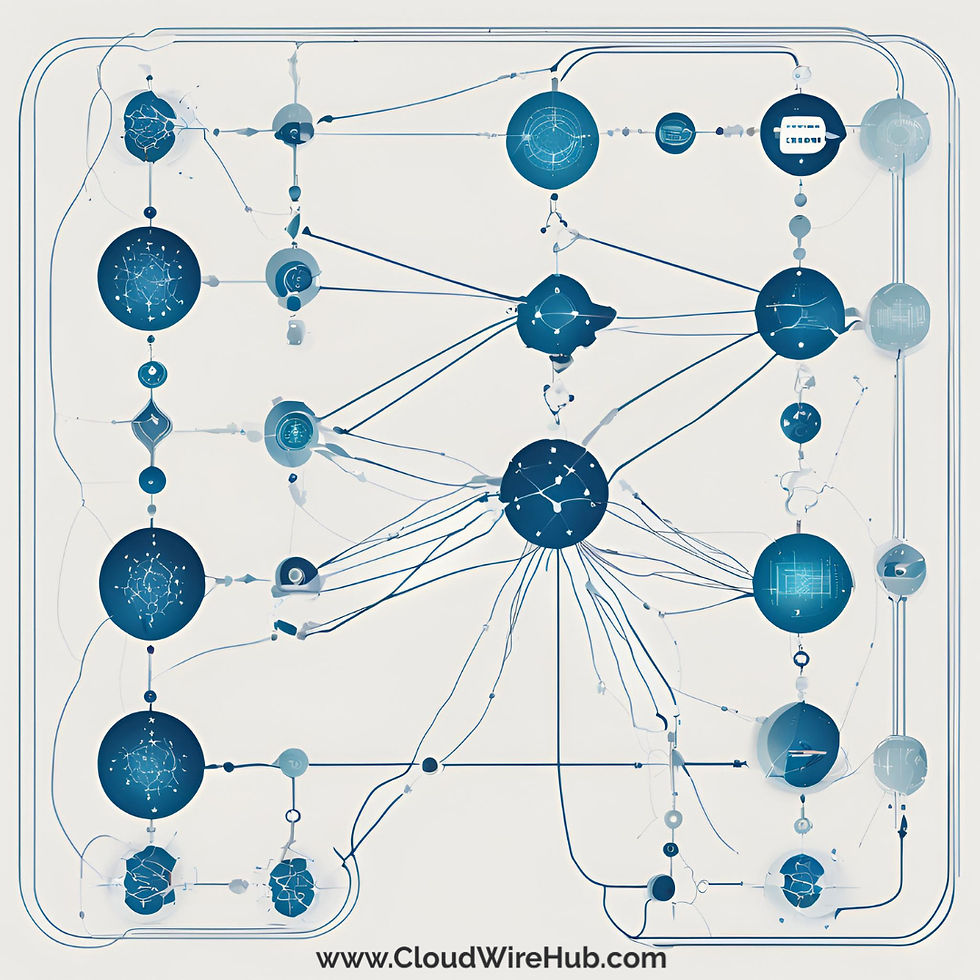Deep Learning Artificial Neural network
- Dhruv Patel
- Dec 7, 2024
- 5 min read
Updated: Jan 8

Deep Learning is a subfield of Machine Learning where ANNs are used for modeling and solving complex problems. It involves multiple layers of neural networks, which can be referred to as Deep Neural Networks (DNNs), to analyze big data and extract meaningful patterns.
A neural network is a computational system inspired by the structure and function of biological neural networks in the human brain. It is considered one of the key concepts within artificial intelligence (AI) and machine learning (ML).
Overview of Artificial Neural Networks (ANNs):
What are ANNs?
Artificial Neural Networks are computing systems inspired by the biological neural networks in the human brain. They consist of interconnected nodes (neurons) organized into layers:
Input Layer: Receives the input data.
Hidden Layers: Process data through weighted connections and nonlinear activation functions.
Output Layer: Produces the final prediction or classification.
How ANNs Work:
Feedforward: Data flows from input to output layer through hidden layers.
Weights & Biases: Neurons are connected by weights, adjusted during training.
Activation Functions: Introduce non-linearity (e.g., ReLU, Sigmoid, Tanh).
Backpropagation: Algorithm to optimize weights by minimizing errors using gradient descent.
Deep Learning Architecture
Types of Neural Networks in Deep Learning:
Multiple Layers:- Deep networks with many hidden layers capture hierarchical representations.
Feature Learning:- Automatically extracts features from raw data.
End-to-End Learning:- From data preprocessing to predictions, the system learns as a whole.
Types of Neural Networks in Deep Learning:
Feedforward Neural Networks (FNNs)
Convolutional Neural Networks (CNNs)
Recurrent Neural Networks (RNNs)
Transformers
Generative Adversarial Networks (GANs)
Autoencoders
Reinforcement Learning Networks
Radial Basis Function Networks (RBFNs)
Spiking Neural Networks (SNNs)
Self-Organizing Maps (SOMs)
Feedforward Neural Networks (FNNs)

A Feedforward Neural Network (FNN) is one of the simplest as well as the most prevalent types of artificial neural network. It consists of layers of neurons, with each neuron in one layer connected to each neuron in the next layer.
One of the defining features of a feedforward network is that information flows only in a single direction, from the input layer, through the layers of hidden units, and onto the output layer, while there are no feedback loops.
Convolutional Neural Networks (CNNs)

Convolutional Neural Networks (CNNs) are a class of deep neural networks specifically designed for processing data that has a grid-like structure, such as images, which can be viewed as 2D grids of pixels. CNNs are particularly powerful in the domain of computer vision, where they have become the go-to architecture for tasks like image classification, object detection, and image generation.
Recurrent Neural Networks (RNNs)

Description: RNNs are specifically designed for sequential data. They have their connections such that the network maintains some state or memory of previous time steps. This allows them to be used in situations where a current input depends on previous inputs.
Use case:- Applications include time series prediction, natural language processing (NLP), speech recognition, and video analysis.
Key Features:- RNNs can deal with sequential data, but traditional RNNs have problems in terms of vanishing and exploding gradient for long sequences.
Long Short-Term Memory Networks (LSTMs)

Description: An RNN that is built to overcome the vanishing gradient problem by using a memory cell to store information for thousands of time steps.
Use cases:- Time series forecasting, text generation, speech recognition, and machine translation.
Key features:- LSTMs can remember long-term dependencies, making them suitable for tasks requiring long-term context.
Gated Recurrent Units (GRUs)

Description: GRUs are a simplified version of LSTMs. Like LSTMs, they utilize gating mechanisms to control information flow and capture long-term dependencies but with fewer parameters than LSTMs.
Use Cases:- Similar to LSTMs, it is used in time series, speech, and language modeling.
Key Features:- In some cases, faster and more efficient compared to LSTMs because they have fewer parameters and are less complex in structure.
Autoencoders (AEs)

Description: Autoencoders are neural networks that are trained to encode input data into a lower-dimensional representation and then decode it back to its original form. It is utilized for data compression, denoising, and dimensionality reduction.
Use Cases:- Data compression, anomaly detection, image denoising, and unsupervised learning.
Key Features:- Unsupervised learning, learns efficient encodings of input data.
Variational Autoencoders (VAEs)
Description: A type of autoencoder that learns a probabilistic mapping of input data. VAEs are used in generating new data by sampling the learned latent space.
Key Features:- Probabilistic encoding, where it is used for creating new data from the learned latent space.
Transformer Networks

Description: Transformer models are built to process sequential data but are different from RNNs and LSTMs in using a mechanism called self-attention. Thus, this allows it to look at the entire sequence simultaneously, making capturing long-range dependencies much more efficient.
Use Cases:- Natural language processing (e.g., machine translation, text summarization), time series forecasting, and image generation (with Vision Transformers).
They are good at handling long-range dependencies in sequential data, and they are highly parallelizable, making them very suitable for large-scale tasks.
Self-Organizing Maps (SOMs)
SOMs are a type of unsupervised neural network that is trained using competitive learning.
They map high-dimensional data to a lower-dimensional (usually 2D) grid.
Use Cases: Clustering, data visualization, and dimensionality reduction.
Key Features: Unsupervised learning, typically used for visualization or
organizing data into clusters.
Radial Basis Function Networks (RBFNs)

RBFNs are feedforward neural networks that use radial basis functions as activation functions. They are typically used for classification and regression problems.
Use Cases:- Function approximation, classification, and regression.
Key Features:- It uses a Gaussian function for activation, effective in interpolating data.
Structure of a Neural Network
Input Layer:- This layer introduces raw data into the network, like pixel values of images and numerical features in datasets.
Hidden Layers:- It is the layers between the input and output layer where computations take place. These layers may extract features or patterns.
Output Layer:- This layer produces the output as predictions, classifications, or even probabilities.
Weights and Biases:- These are the parameters optimized during training so that the network's prediction improves.
Activation Functions:- Applied to neurons' outputs to introduce non linearities. (E.g., Sigmoid, ReLU and tanh.)
Training Process
Forward Propagation:- The process of passing data across the network to calculate predictions.
Loss Function:- Measures how far the predictions are from the actual targets, be it mean squared error for regression or cross-entropy for classification.
Backward Propagation (Backprop):- It adjusts weights and biases using optimization techniques like gradient descent in order to minimize the error.
Epochs:- The number of full passes through the whole training set.
Batch Size:- the number of data samples passed before the model gets updated.
Advantages of Deep Learning and ANNs
Feature Learning:- Does not require handcrafted feature engineering.
Scalability:- Does well with big data.
Versatile Applications:- Image Recognition (facial recognition, medical imaging).
Natural Language Processing (NLP):- Translation, sentiment analysis.
Speech Recognition and Generation:- Virtual assistants.
Autonomous Systems:- Self-driving cars.
Improved Accuracy:- Is good at things that demand precision.
Challenges in Deep Learning
Data Dependency:- Needs a lot of data to train on.
Computationally Intensive:- Requires heavy hardware (for example, GPUs, TPUs).
Lack of Interpretability:- Is a "black box" that is not easy to understand the decisions it makes.
Overfitting:- Models might perform well on the training data but poorly on new data.
Applications of Deep Learning
Healthcare:- Disease diagnosis, drug discovery.
Finance:- Fraud detection, algorithmic trading.
Retail:- Recommendation systems, inventory management.
Gaming:- AI-driven player opponents.
Robotics:- Object detection, motion planning.
Conclusion
Powered by artificial neural networks, deep learning is the one that will change many industries by streamlining complex work and enabling complex analytics. Its ability to process a large amount of unstructured data makes it an indispensable tool in today's AI application.
However, its potential is yet to be seen as it addresses its challenges related to data requirements, computational needs, and model interpretability. As technology improves, so will deep learning.



Comments